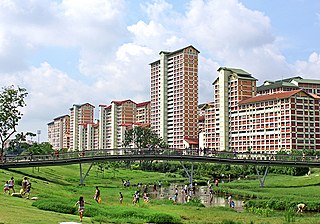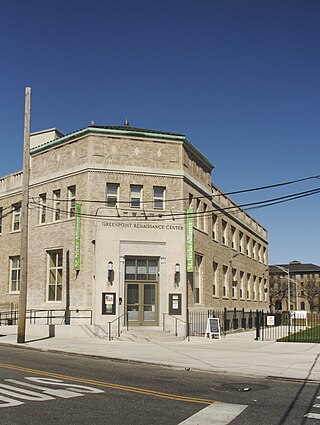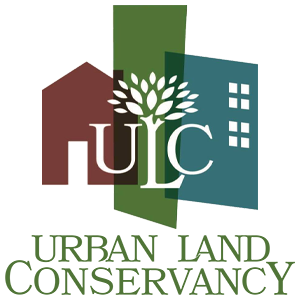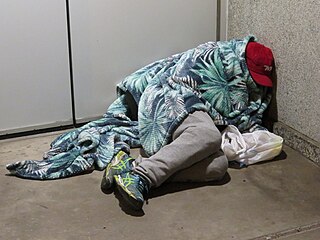Related Research Articles

Winfield Scott Stratton was an American prospector, capitalist, and philanthropist. He discovered the Independence Lode near Victor, Colorado on July 4, 1891, and became the Cripple Creek Mining District's first millionaire in 1894. He provided to build buildings, improve the street car system, build the first professional ball park, and provided funds to people in need.

Public housing is a form of housing tenure in which the property is usually owned by a government authority, either central or local. Although the common goal of public housing is to provide affordable housing, the details, terminology, definitions of poverty, and other criteria for allocation vary within different contexts.

Single room occupancy is a form of housing that is typically aimed at residents with low or minimal incomes, or single adults who like a minimalist lifestyle, who rent small, furnished single rooms with a bed, chair, and sometimes a small desk. SRO units are rented out as permanent residence and/or primary residence to individuals, within a multi-tenant building where tenants share a kitchen, toilets or bathrooms. SRO units range from 7 to 13 square metres. In some instances, contemporary units may have a small refrigerator, microwave, or sink.

Affordable housing is housing which is deemed affordable to those with a household income at or below the median as rated by the national government or a local government by a recognized housing affordability index. Most of the literature on affordable housing refers to mortgages and a number of forms that exist along a continuum – from emergency homeless shelters, to transitional housing, to non-market rental, to formal and informal rental, indigenous housing, and ending with affordable home ownership.
Bethany Hill School is a living and learning community sponsored by the Sisters of Saint Joseph of Boston in collaboration with South Middlesex Opportunities Council and other social service programs in the MetroWest region.

So Others Might Eat (SOME) is a nonprofit organization that provides services to assist those dealing with poverty and homelessness in Washington, D.C. The organization provides affordable housing, job training, counseling and other healthcare services, and daily needs such as food and clothing to the poor and homeless. It spends the largest portion of its annual budget on affordable housing, with a majority of its residents recovering from addiction. SOME describes its mission as helping "our vulnerable neighbors in Washington, DC, break the cycle of homelessness through our comprehensive and transformative services".
A group home, congregate living facility, care home, adult family home, etc., is a structured and supervised residence model that provides assisted living and medical care for those with complex health needs. Traditionally, the model has been used for children or young people who cannot live with their families or afford their own homes, people with chronic disabilities who may be adults or seniors, or people with dementia and related aged illnesses. Typically, there are no more than six residents, and there is at least one trained caregiver there 24 hours a day. In some early "model programs", a house manager, night manager, weekend activity coordinator, and four part-time skill teachers were reported. Originally, the term group home referred to homes of 8 to 16 individuals, which was a state-mandated size during deinstitutionalization. Residential nursing facilities, also included in this article, may be as large as 100 individuals in 2015, which is no longer the case in fields such as intellectual and developmental disabilities. Depending on the severity of the condition requiring one to need to live in a group home, some clients are able to attend day programs and most clients are able to live normal lifestyles.
Texas state supported living centers are a collection of residential facilities run by the state for people with intellectual disabilities in Texas, United States. The schools, operated by the Texas Health and Human Services Commission operate under the Federal Intermediate Care Facilities for Individuals with Intellectual Disabilities (ICF/IID) program.
The Atlanta Housing Authority (AHA) is an agency that provides affordable housing for low-income families in Atlanta. Today, the AHA is the largest housing agency in Georgia and one of the largest in the United States, serving approximately 50,000 people.

Homelessness or houselessness – also known as a state of being unhoused or unsheltered – is the condition of lacking stable, safe, and functional housing. The general category includes disparate situations, including:
RiseBoro Community Partnership, formerly known as Ridgewood Bushwick Senior Citizens Council, is a non-profit organization in Bushwick, Brooklyn. Founded in 1973 by Vito Lopez, RBSCC offers housing and family services to neighborhoods in Brooklyn and Queens.Ridgewood Bushwick Senior Citizens Council is a non-profit organization in Bushwick, Brooklyn. RBSCC offers housing, youth, healthcare family and senior services to the residents of Bushwick, Williamsburg, Greenpoint, East New York, Ridgewood, Glendale, and surrounding Brooklyn and Queens communities.
Historically, squatting occurred in the United States during the California Gold Rush and when colonial European settlers established land rights. There was squatting during the Great Depression in Hoovervilles and also during World War II. Shanty towns returned to the US after the Great Recession (2007–2009) and in the 2010s, there were increasing numbers of people occupying foreclosed homes using fraudulent documents. In some cases, a squatter may be able to obtain ownership of property through adverse possession.
Launch Housing is a secular Melbourne-based community organisation that delivers homelessness services and housing supports to disadvantaged Victorians.

The Greenpoint Renaissance Enterprise Corporation (GREC) is a consortium of neighborhood organizations in North Brooklyn that serves to facilitate and advocate the activities for city initiatives, as well as coordinate community involvement in the neighborhood of the former Greenpoint Hospital Complex.

Carrfour Supportive Housing is a nonprofit organization established in 1993 by the Homeless Committee of the Greater Miami Chamber of Commerce. It develops, operates and manages affordable and supportive housing communities for low-income individuals and families in Miami-Dade County, Florida. Carrfour is Florida's largest not-for-profit supportive housing provider, housing more than 10,000 formerly homeless men, women and children in 20 communities throughout Miami-Dade County, assembling over $300 million of financing, tax credits and subsidies, and developing more than 1,700 affordable housing units since its founding.

Urban Land Conservancy (ULC) is a Denver-based nonprofit, established in 2003, that acquires, develops and preserves real estate assets. They acquire properties they identify as having community benefit, and have developed financing tools to aid in their real estate acquisitions.

Public housing in the United Kingdom, also known as council housing or social housing, provided the majority of rented accommodation until 2011 when the number of households in private rental housing surpassed the number in social housing. Dwellings built for public or social housing use are built by or for local authorities and known as council houses. Since the 1980s non-profit housing associations became more important and subsequently the term "social housing" became widely used, as technically council housing only refers to housing owned by a local authority, though the terms are largely used interchangeably.

Homelessness is a growing problem in Colorado and is considered the most important social determinants of health. Homelessness is very difficult for many Coloradoans to escape due to the continuous increase in costs for housing in Colorado, along with mental health treatments and other factors. When people are forced to live without stable shelter, they are then exposed to a number of risk factors that affect physical and mental health. Although it is difficult to pin point any one cause of homelessness, there is a complicated combination of societal and individual causes.

Columbus, the capital city of Ohio, has a history of social services to provide for low- and no-income residents. The city has many neighborhoods below the poverty line, and has experienced a rise in homelessness in recent decades. Social services include cash- and housing-related assistance, case management, treatment for mental health and substance abuse, and legal and budget/credit assistance.
References
- 1 2 3 4 5 6 7 8 9 10 11 12 13 R Scott Rappold (April 15, 2013). "Myron Stratton Home: The House That Generosity Built". The Gazette. Colorado Springs, CO.[ dead link ]
- 1 2 3 4 Cary Leider Vogrin (September 18, 2006). "Still serving those in need 3 agencies expected to move into Myron Stratton Home". The Gazette. Colorado Springs, CO. Archived from the original on November 17, 2018. Retrieved January 30, 2015– via HighBeam Research.